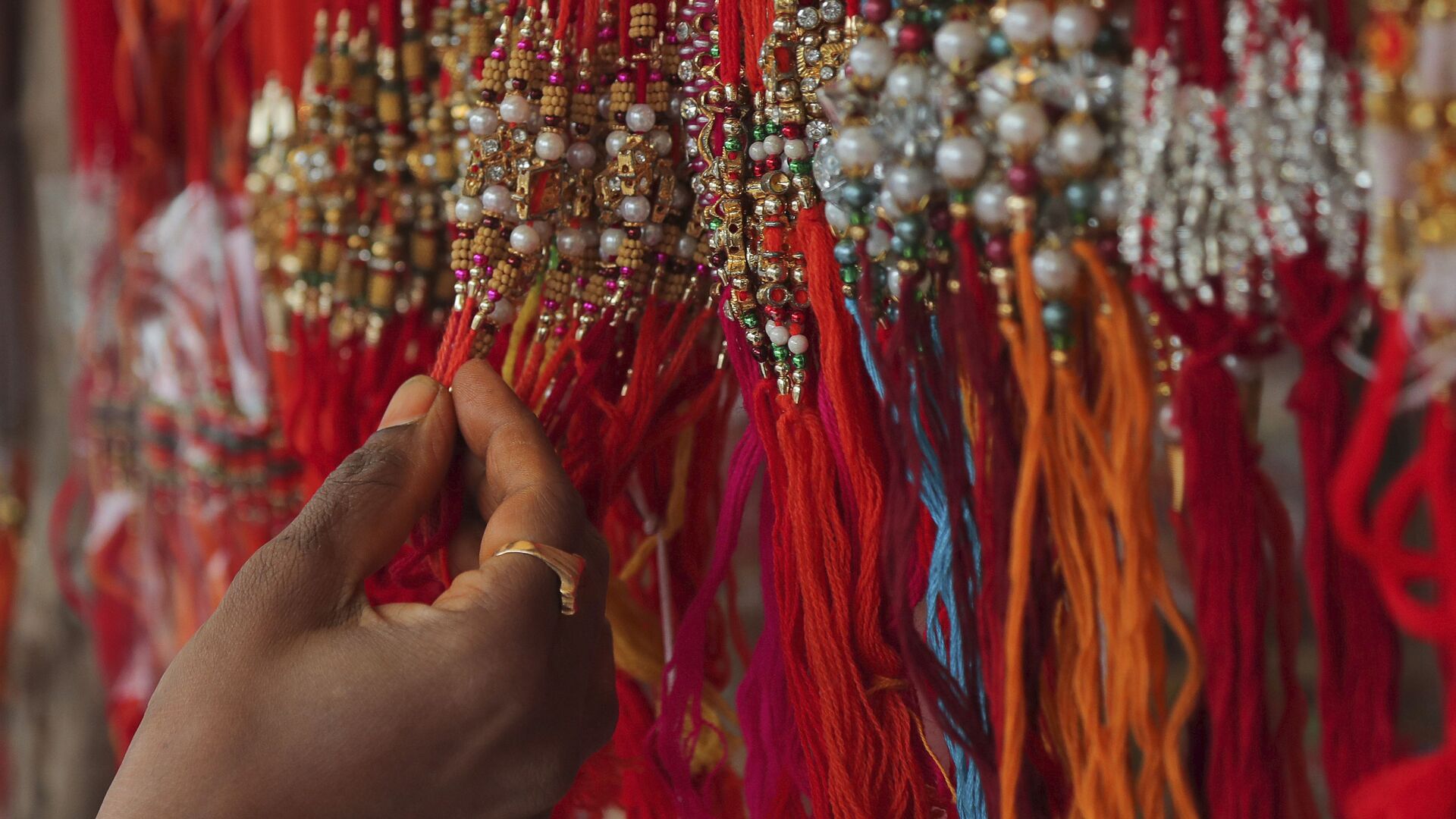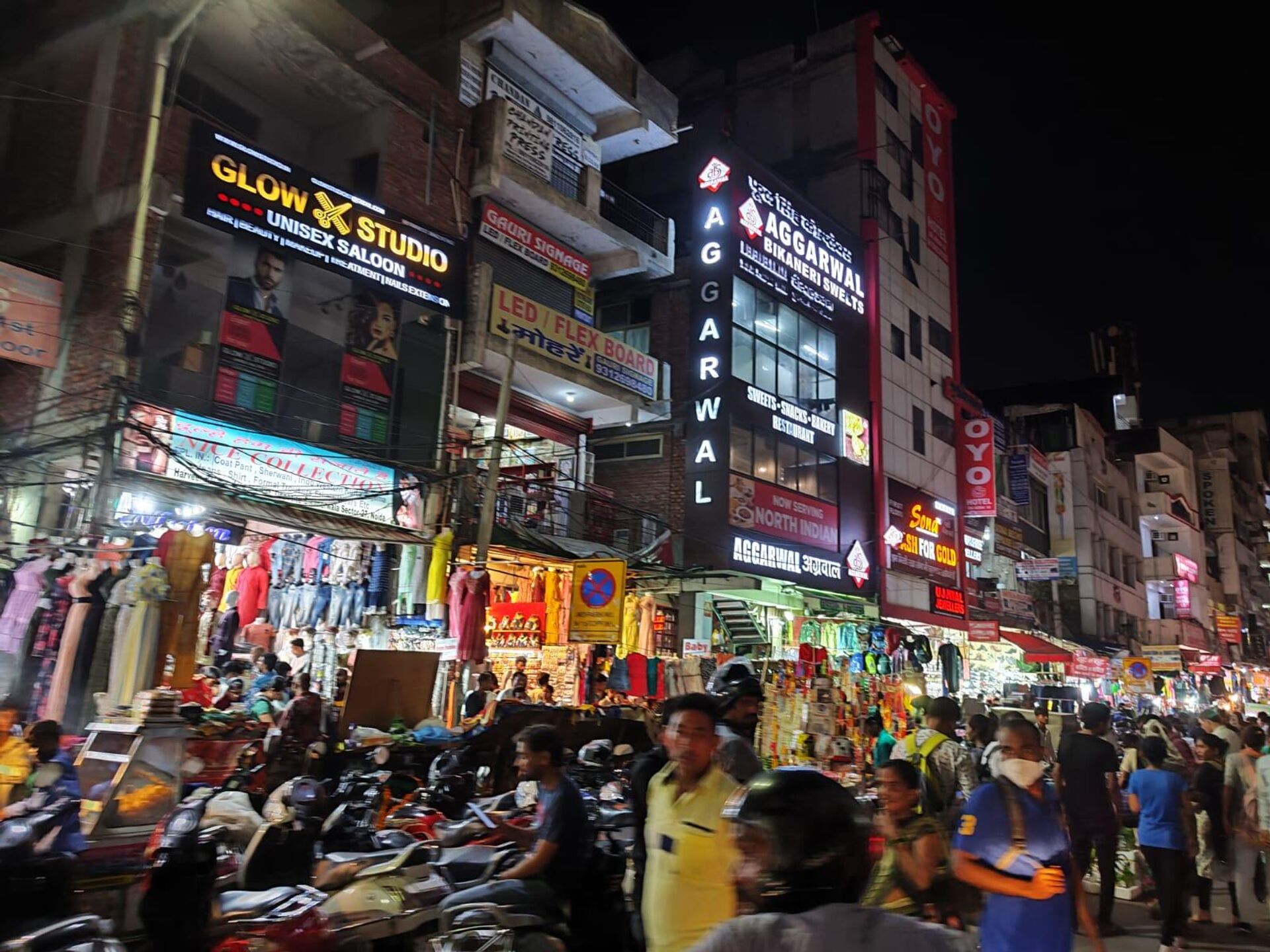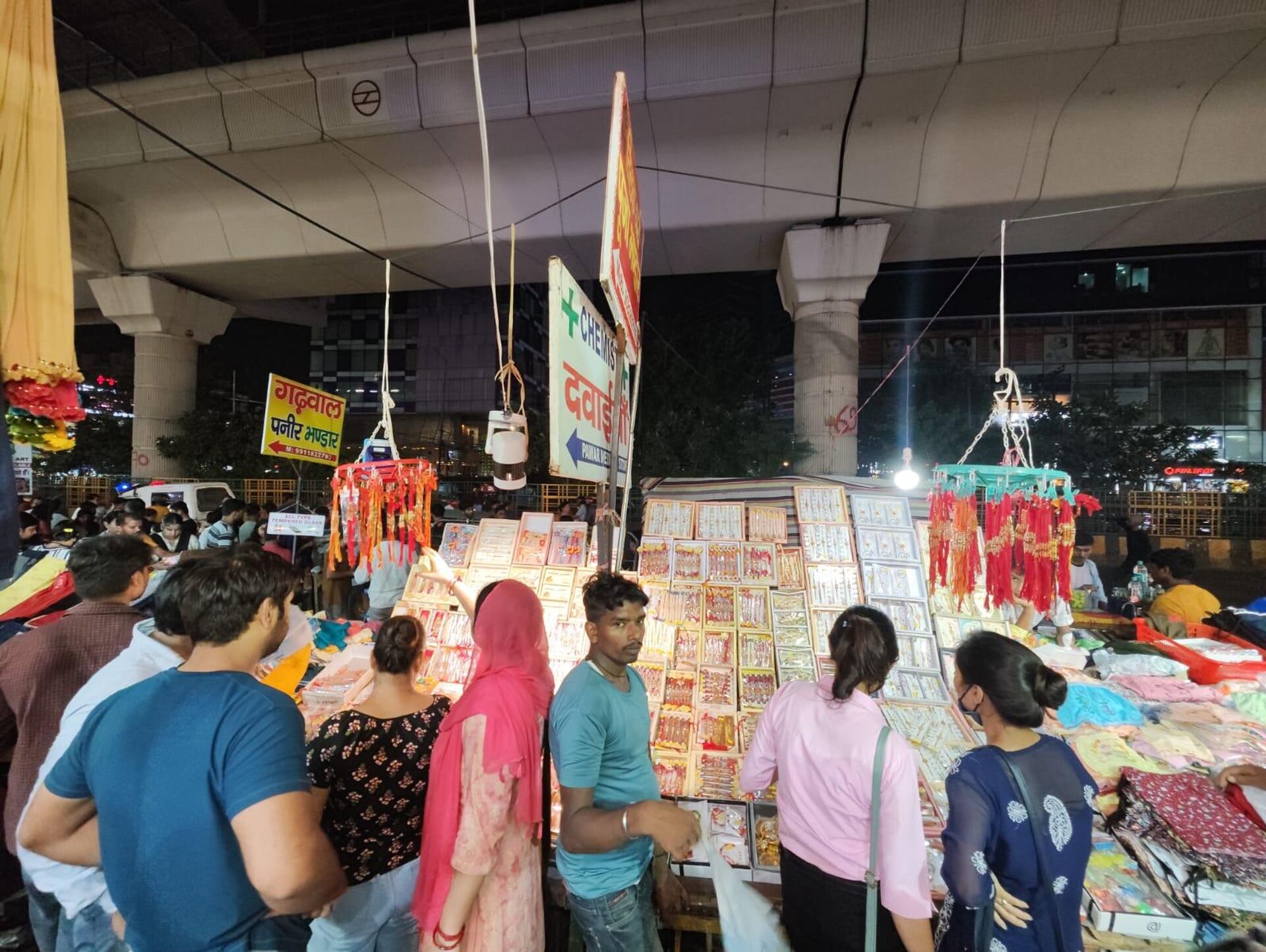https://sputniknews.in/20230831/why-is-raksha-bandhan-celebrated-3804500.html
Why is Raksha Bandhan Celebrated?
Why is Raksha Bandhan Celebrated?
Sputnik India
India is a land of festivals where the people are known to celebrate their different cultural or religious occasions in a big way.
2023-08-31T11:38+0530
2023-08-31T11:38+0530
2023-08-31T11:38+0530
explainers
india
delhi
new delhi
uttar pradesh
madhya pradesh
gujarat
rajasthan
tamil nadu
hindu festival
https://cdn1.img.sputniknews.in/img/07e7/08/18/3819041_0:195:2949:1854_1920x0_80_0_0_10112b093ae246f6917ac6f5f17bf93b.jpg
India is a land of festivals, where people are known for celebrating their various cultural or religious occasions in a big way. While every month witnesses some festive occasion, the main festival season commences with the month of "Shravana".This month, considered one of the most auspicious as per the Hindu almanac, is the time when Lord Shiva is worshipped by his devotees, many of whom observe a fast to please him. Several festivals are celebrated during the month, of which "Hariyali Teej", "Nag Panchami", and "Raksha Bandhan" are the most prominent ones."Hariyali Teej" is celebrated to commemorate the union of Lord Shiva and the goddess Parvati, while on "Nag Panchami", women worship the snake god to seek blessings for their brothers and family.How is 'Raksha Bandhan' Celebrated?Raksha Bandhan marks the end of the month of "Shravana". The festival is predominantly celebrated in the northern states of India, like Uttar Pradesh, Haryana, Punjab, Rajasthan, and others. However, other states also celebrate the festival.The rituals of celebrating Raksha Bandhan are different across the states. Before tying rakhis, the sisters all dressed up in new clothes, light "Diya" (earthen lamp) in front of the deity and avoid taking any meal until they tie the sacred thread around their brothers' arms.In return, the brothers give them gifts with an assurance to protect them at every step of life.In Jammu, sisters tie rakhis on their brothers' arms, while the day is also an occasion to celebrate "Shravan Purnima", devoted to Lord Krishna and his consort Radha. People worship them.In Maharashtra and other coastal areas of the country, people worship the sea. Members of the fishing community throw coconuts into the sea as offerings, and then consume coconut-based sweets.The day is celebrated as "Pavitropana" in western states like Gujarat, where women worship Lord Shiva. In central states, the day is observed as "Kajari Purnima", during which farmers worship their land, while women perform special worship along with their sons.Hindu Legends Related to Raksha BandhanThere is varied lore linked to Indian festivals, as there are a few related to "Raksha Bandhan".On seeing the blood oozing out of Krishna's finger, Draupadi tore out her saree and wrapped it around it. In return, Lord Krishna promised her to help during any time of distress. As per Mahabharat, Lord Krishna eventually helped her when she was being disrobed by Kauravas.However, the goddess Lakshmi (Lord Vishnu’s wife), who was not able to bear her husband’s absence, disguised as a poor lady, went to King Bali and said that she wanted a place to stay until her husband returned from the task he had set out to accomplish.King Bali welcomed her to his palace and protected her. One day, she tied a thread around Bali’s wrist. Overwhelmed by her gesture, he granted her a wish. The goddess Lakshmi (still disguised as a poor lady) asked him to free her husband.There is another legend related to Raksha Bandhan involving Yama (the god of death) and the Yamuna River. One Hindu legend says "Yamuna" was granted immortality by Yama when she tied Rakhi to him. Moved by the gesture, Yama declared that any brother who assured to protect his sister when she ties a rakhi to him would become immortal.
https://sputniknews.in/20230823/raksha-bandhan-gold-silver-and-diamond-studded-rakhis-draw-big-buyers-3771232.html
india
delhi
new delhi
uttar pradesh
madhya pradesh
gujarat
rajasthan
tamil nadu
haryana
Sputnik India
feedback.hindi@sputniknews.com
+74956456601
MIA „Rossiya Segodnya“
2023
Rahul Trivedi
https://cdn1.img.sputniknews.in/img/07e6/0c/13/136500_0:0:628:627_100x100_80_0_0_72097ff894c7446b70d2efafcb719720.jpg
Rahul Trivedi
https://cdn1.img.sputniknews.in/img/07e6/0c/13/136500_0:0:628:627_100x100_80_0_0_72097ff894c7446b70d2efafcb719720.jpg
News
en_IN
Sputnik India
feedback.hindi@sputniknews.com
+74956456601
MIA „Rossiya Segodnya“
Sputnik India
feedback.hindi@sputniknews.com
+74956456601
MIA „Rossiya Segodnya“
Rahul Trivedi
https://cdn1.img.sputniknews.in/img/07e6/0c/13/136500_0:0:628:627_100x100_80_0_0_72097ff894c7446b70d2efafcb719720.jpg
raksha bandhan, raksha bandhan 2023, रक्षाबन्धन, how is raksha bandhan celebrated, what is raksha bandhan, is raksha bandhan 2023 date, raksha bandhan bracelet, story behind raksha bandhan, raksha bandhan meaning, रक्षा बंधन क्यों मनाते है, legends of raksha bandhan, lord krishna, draupadi, shravan, hariyali teej, rakhi, jhulan purnima, avani avittam, pavitropana, kajari purnima, story of lord krishna and draupadi, story of yama and yamuna, story of goddess lakshmi and king bali
raksha bandhan, raksha bandhan 2023, रक्षाबन्धन, how is raksha bandhan celebrated, what is raksha bandhan, is raksha bandhan 2023 date, raksha bandhan bracelet, story behind raksha bandhan, raksha bandhan meaning, रक्षा बंधन क्यों मनाते है, legends of raksha bandhan, lord krishna, draupadi, shravan, hariyali teej, rakhi, jhulan purnima, avani avittam, pavitropana, kajari purnima, story of lord krishna and draupadi, story of yama and yamuna, story of goddess lakshmi and king bali
Why is Raksha Bandhan Celebrated?
Raksha Bandhan, a festival celebrating the bond of love and affection among siblings, is celebrated in India today with great fervor.
India is a land of festivals, where people are known for celebrating their various cultural or religious occasions in a big way.
As per the Hindu almanac, which is based on 12 full cycles of the phases of the Moon, the new year starts between March and April. The first month is known as "Chaitra", followed by "Vaisakha", "Jyaistha", "Asadha", "Shravana", "Bhadra", "Ashvina", "Kartika", "Agrahayana", "Pausa", "Magha", and "Phalguna".
While every month witnesses some festive occasion, the main festival season commences with the month of "Shravana".
This month, considered one of the most auspicious as per the Hindu almanac, is the time when Lord Shiva is worshipped by his devotees, many of whom observe a fast to please him.
Several festivals are celebrated during the month, of which "
Hariyali Teej", "
Nag Panchami", and "
Raksha Bandhan" are the most prominent ones.
"Hariyali Teej" is celebrated to commemorate the union of Lord Shiva and the goddess Parvati, while on "Nag Panchami", women worship the snake god to seek blessings for their brothers and family.
How is 'Raksha Bandhan' Celebrated?
Raksha Bandhan marks the end of the month of "Shravana". The festival is predominantly celebrated in the northern states of India, like Uttar Pradesh, Haryana, Punjab, Rajasthan, and others. However, other states also celebrate the festival.
The rituals of celebrating Raksha Bandhan are different across the states.
In the northern states, sisters tie rakhi (sacred thread) on the wrists of their brothers, offer them sweets, and seek God's blessings for them.
Before tying rakhis, the sisters all dressed up in new clothes, light "Diya" (earthen lamp) in front of the deity and avoid taking any meal until they tie the sacred thread around their brothers' arms.
In return, the brothers
give them gifts with an assurance to protect them at every step of life.
In Jammu, sisters tie rakhis on their brothers' arms, while the day is also an occasion to celebrate "Shravan Purnima", devoted to Lord Krishna and his consort Radha. People worship them.
In Maharashtra and other coastal areas of the country, people worship the sea. Members of the fishing community throw coconuts into the sea as offerings, and then consume coconut-based sweets.
Meanwhile, in southern states of the country like Tamil Nadu and Kerala, the day is celebrated as "Avani Avittam", where members of the Brahmin community take a holy dip in rivers and ask for forgiveness of their sins.
The day is celebrated as "Pavitropana" in western states like Gujarat, where women worship Lord Shiva. In central states, the day is observed as "Kajari Purnima", during which farmers worship their land, while women perform special worship along with their sons.
Hindu Legends Related to Raksha Bandhan
There is varied lore linked to Indian festivals, as there are a few related to "Raksha Bandhan".
The most popular legend is that of Lord Krishna and Draupadi (wife of Pandavas). According to Mahabharata scripture, Lord Krishna cut his finger while killing his nephew Shishupal after the latter continued with his bad demeanour despite repeated warnings.
On seeing the blood oozing out of Krishna's finger, Draupadi tore out her saree and wrapped it around it. In return, Lord Krishna promised her to help during any time of distress. As per Mahabharat, Lord Krishna eventually helped her when she was being disrobed by Kauravas.
Another mythological story is related to the goddess Lakshmi and King Bali. It is believed that Lord Vishnu was extremely happy with King Bali when the latter gave his entire kingdom to the lord, who had come in disguise. He gave blessings to the king and disguised himself again as a gatekeeper of his palace.
However, the goddess Lakshmi (Lord Vishnu’s wife), who was not able to bear her husband’s absence, disguised as a poor lady, went to King Bali and said that she wanted a place to stay until her husband returned from the task he had set out to accomplish.
King Bali welcomed her to his palace and protected her.
One day, she tied a thread around Bali’s wrist. Overwhelmed by her gesture, he granted her a wish. The goddess Lakshmi (still disguised as a poor lady) asked him to free her husband.
There is another legend related to Raksha Bandhan involving Yama (the god of death) and the Yamuna River. One Hindu legend says "Yamuna" was granted immortality by Yama when she tied Rakhi to him. Moved by the gesture, Yama declared that any brother who assured to protect his sister when she ties a rakhi to him would become immortal.





